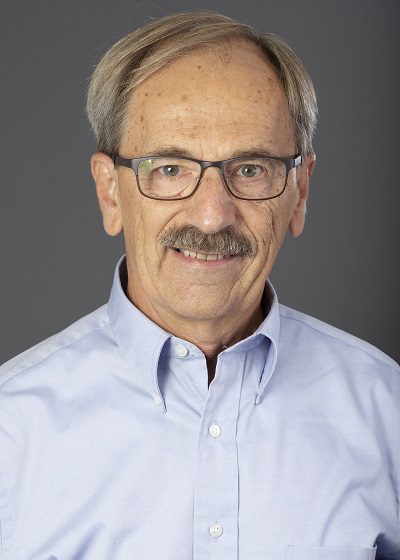From the Editor: Spring’s Arrival Leads to Thoughts of Unfrozen Infrastructure

As I write this in early March, we’re experiencing sunny, warm days in the Midwest. We had a warmer-than-average winter with less snow than usual.
Spring is the time when we witness the change from gray and white to blue and green. The sky clears itself of the ever-present cloud cover and melts the snow of winter, giving way to blue above and green growth at ground level.
If this sounds a bit poetic, it’s because I’m preparing myself for the companion season of road construction and farm-equipment traffic issues. (These are the two groups of people who describe the aromas of hot asphalt and fertilizer as the smell of money.) Not that I’m against these inconveniences; on the contrary, I’m all for better infrastructure and fresh food!
State of the Infrastructure
As I’ve done the last few years, it’s time to check in on the state of our infrastructure and, more importantly, what we and our government are planning to do about it.
During the last State of the Union address, the president asked for passage of Senate Bill 2302, America’s Transportation Infrastructure Act (ATIA). There were not a lot of details in the address, including how to pay for it, but it was the only thing that received applause from virtually everyone in the audience.
ATIA would authorize $287 billion from the Highway Trust Fund over five years for various improvements to our transportation infrastructure system distributed to the states by formula. Although a major improvement over the non-action for three years, it’s by no means as large as the administration had promised during the election campaign. Nor is there anything new: this is the way transportation funding operated in the past.
So … we remain hopeful that the urgency of the country’s crumbling infrastructure will outweigh the deterrent of politics in moving forward on the passage of an infrastructure bill.
Do We Have Enough Intellectual Resources?
The following has been a concern in the last few years: if an infrastructure funding plan was put in place, do we have the engineering resources to keep up with the work required to spend down that money? My colleagues report that it has been and continues to be difficult to find civil engineers to perform this work. It seems to be more common that when a firm is awarded a large project, they hire from other firms. Then when that project is completed, the engineers move on to where the work is. This is good for those engineers who are in demand, because they can rely on steady work and—most likely—incremental salary adjustments as they move along. But if the infrastructure program increases significantly, this situation will not be enough to complete the work.
How do we increase the number of civil engineers capable of designing and building our infrastructure? It’s not my field of expertise to answer this question, but I think it’s a concern.
There are some obvious reasons why there may not be enough civil engineers in our education system. One is that civil engineering continues to lag in compensation compared to other engineering disciplines; perhaps the economic laws of supply and demand will help equalize that.
Another is that the public image of civil engineering is not what it used to be. Engineers used to be “heroes” who designed and built high-capacity highways and huge bridges crossing previously unheard-of distances. Unfortunately, now we’re often thought of as the ones who want to take away someone’s property or destroy some trees or—as mentioned above—cause traffic delays.
Another factor that’s difficult to predict because of the current administration’s policies is the percentage of international students available. The number of students who are temporary residents is small, but international students in civil engineering have helped overcome the shortage of qualified engineers for a long time, especially at the graduate level. If this number is reduced because of immigration policies, the problem would be exacerbated.
As I mentioned earlier, I’m not the one with these answers, but I know we must be thinking about this now. In the next couple months, I intend to interview some civil engineering professors and deans for future columns. I hope to discuss these issues and others, including the differences in education between when I was a student and now as well as which trends they see as important for the future.
About Robert Schickel
Robert Schickel was born in New Jersey and received his BS in Civil Engineering degree in 1971 from Valparaiso University in Indiana. His career started as a bridge design engineer and expanded to include design of various transportation facilities, including highways, bridges, rail lines and stations, and airport runways. Mr. Schickel managed engineering offices ranging from 20 to 140 people. He also served as a consultant to a large utility company. Mr. Schickel currently resides in Indiana and serves as Adjunct Professor for the College of Engineering at Valparaiso University. He enjoys his retired life at his lake house, playing golf, listening to music and spending time with his family, especially his grandchildren.


